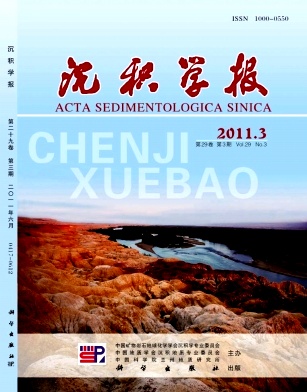Tempestite of Early Triassic Feixianguan Formation in Shangsi Section, Guanyuan: Are they extreme climatic event under megamonsoon system?
- Received Date: 1900-01-01
- Rev Recd Date: 1900-01-01
- Publish Date: 2011-06-10
-
Key words:
- Early Triassic /
- Feixianguan Formation /
- megamonsoon /
- Gaia effect
Abstract: Early Triassic Yangtze platform was located in the northeastern margin of Tethys. Based upon the large amount of geological evidence and simulation experiments, researchers confirmed that the Triassic climate system was megamonsoon that controlled the climate of whole Pangaea and surrounding sea. However abundant outcrops of Triassic strata in our country, whether contained some information implying monsoon climate? We found a set of wellpreserved tempestite in the Lower Triassic at Shangsi Section, Guangyuan city, northwest Sichuan, which developed in the lower part of the Feixianguan Formation. The sedimentary characteristics of Lower Triassic Tempestite was significant, including stormgenerated gravel, storm erosion structures, storm tear structures and bedding structures. Gravel was composed of micritic limestone, and might be divided into two types according to roundness. One contained brecciated, strip, axiolitic shape; the other presented flatgravel shape. Storm erosion structures included pocket and chrysanthemum shape formed by drainage and channel mode, erosion surface structure. Storm tear structures included messy mud gravel, torn sutureline breccia and truncated structure amongst lays. Bedding structures included hummocky cross bedding, graded bedding,blocky bedding ,homogeneous bedding and parallel bedding. According to sedimentary structures and lithology, three kinds of sequence of SaSbSc, SbSd, SaScSd(Sastranded gravel deposition, Sbgraded bedding, Schummocky crossstratification, Sdhomogeneous bedding) were recognized. The storm deposits occurred in the shallow sea and the formation, development and characteristics of the tempestites have important significance on paleoclimate research. We think that tempstite in Shangsi (and even whole UpperYangtze region) was controlled likely by the strong monsoon system (Megamonsoon) in Early Triassic, and the P/T boundary mass extinction event let tempestite be preserved below the setting that organism burrows were few.
| Citation: | ZENG Deyong. Tempestite of Early Triassic Feixianguan Formation in Shangsi Section, Guanyuan: Are they extreme climatic event under megamonsoon system?[J]. Acta Sedimentologica Sinica, 2011, 29(3): 440-448. |






 DownLoad:
DownLoad: